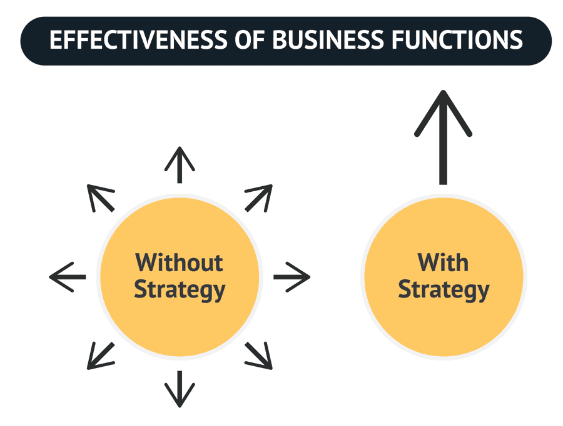Now the headers have been put away for the year and the results are in the bin, hopefully all growers have an opportunity to recharge and refresh before sowing preparation starts and we go around again. With a clear head, and equipped with production and financial results, it is also the opportune time to create a strategic plan.
Why is strategy important?
ORM conducted a Business Planning workshop last year on behalf of the GRDC, and of the four modules on different areas of running a farm business that we covered, participants seemed most surprised by the strategy and business planning module. The strategy session also rated as the session where their understanding improved the most. Through the feedback, participants highlighted that it is an area that is important to the overall success of the business, and one that gets the least attention.
Our participants are not Robinson Crusoe in this respect. In 2019 PwC’s Strategy& conducted a survey of more than 6,000 executives from companies of various sizes, geographies, and industries finding:
- Companies that get strategy right “are three times as likely to report above-average growth as incoherent companies”, and
- “35% of executives believe their strategy is going to lead their company to success.”1
So, if most executives agree strategy is important but most businesses are doing it poorly, where are we falling down?
1. https://www.strategyand.pwc.com/gx/en/unique-solutions/cds/the-strategy-crisis.pdf
Formulating a good strategy shouldn’t be complicatedWhen it comes to formulating a strategy, having a good process is important. Part art and part science, strategy formulation is often debated and there is no single correct method. There are literally libraries worth of books on the topic of strategy and it can quickly get confusing. Goals, objectives, tactics. Mission, vision, purpose, values. With so many components and differing approaches, where do we start? Diagram Source: https://consulterce.com/business-strategy/ |
 |
 |
Purpose-led strategy is the soup-du-jour of strategy consultants. And with good reason; a purpose-led strategy has famously underpinned some of the world’s most successful companies like Apple, Nike, Tesla, Amazon etc. Simon Sinek, who has sold a million copies of “Start With Why” and whose TEDx Talk on the same topic has garnered around 10 million views, describes “Why is your purpose; How is your process”, and maintains “People don’t buy what you do; they buy why you do it.”2
2.“Start with Why: How Great Leaders Inspire Everyone to Take Action”, Simon Sinek, 2009
|
Diagram Source: https://www.smartinsights.com/digital-marketing-strategy/online-value-proposition/start-with-why-creating-a-value-proposition-with-the-golden-circle-model/
Find Your Purpose
But firstly, what is purpose? One definition of purpose, as it relates to an organisation, is:
“Purpose is an organisation’s reason for existing beyond just the financial. It sets out why the organisation matters, building on its core, differentiating capabilities, and articulates the value of the organisation to wider societal stakeholders.”3
https://www.pwc.co.uk/services/consulting/purpose-led-business.html
Our presenter at the Business Planning workshop, Geoff Martin from MBS, had a simple and effective process to define your purpose:
- List your business stakeholders, and give each stakeholder an importance score.
- List what you want to be known for by each stakeholder.
- List your most important stakeholder/s and how you want to be known to that stakeholder/s. This is your purpose; why your organisation exists.
Although simple in theory, it did require plenty of thinking and created a lot of discussion amongst workshop participants. We can find examples of large public companies to see how they define purpose.
For example, let’s look at Nike’s purpose:
“Our purpose is to unite the world through sport to create a healthy planet, active communities, and an equal playing field for all.”4
“Communities”, “the planet” and “all” can be viewed as Nike’s most important stakeholders; creating “active communities”, “a healthy planet” and “an equal playing field” is what Nike wants to be known for by each stakeholder respectively; and they are going to achieve this by “uniting the world through sport”.
Now most organisations don’t have the reach or the lofty ambitions that Nike do, but it also could be argued that those daring ambitions are what has driven the company to get to where it is now. And while we described purpose as being beyond the financial, it is also the way a business produces profit. So purpose and profit are not mutually exclusive.
4. FY19 NIKE, INC. Impact Report Executive Summary
How does strategy fit with purpose?
Once purpose, or the “why” is defined, strategic objectives will be the “how” you deliver on what you will be known for, bringing the purpose to life.
So, if a goal is an outcome or a desired result; a strategy is the direction or approach you take to achieve it, while a plan is the details.
Look out for more on strategy in next month’s newsletter, or if you would like help with strategic planning please get in touch with ORM on 5441 6176.
Ben Hogan, Agribusiness Consultant.
For more information contact us here admin@orm.com.au